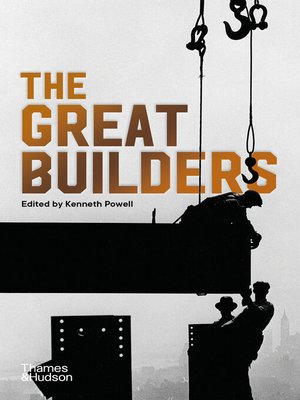
Sign up to save your library
With an OverDrive account, you can save your favorite libraries for at-a-glance information about availability. Find out more about OverDrive accounts.
Find this title in Libby, the library reading app by OverDrive.



Search for a digital library with this title
Title found at these libraries:
| Library Name | Distance |
|---|---|
| Loading... |
The Great Builders surveys the careers of forty great architects whose engineering skills were crucial to their success. Sixteen nationalities and seven centuries of architectural innovation make for a survey of spectacular scope and depth: from churches and fortresses to bridges and high-tech skyscrapers, it includes masterpieces from all over the world and covers 700 years of architectural history.
Here is Brunelleschi, who built the unbuildable dome of Florence Cathedral; Sinan, a Christian engineer who became chief architect to the Ottoman court; Joseph Paxton, scribbling down a design for the Crystal Palace, London, on a piece of blotting paper; and James Bogardus, an early American evangelist of the opportunities offered by cast-iron architecture.
Rapid advances in industrial production inspired experiments with new materials and techniques, gradually allowing a whole new architecture to emerge: reinforced concrete, plate glass and steel were central to the creations of Le Corbusier, Auguste Perret and Mies van der Rohe, for instance; and, in the High-Tech architecture of the present day represented by Norman Foster, Frank Gehry and Santiago Calatrava, among others computer-aided design has seemingly tested the boundaries of the possible.
Here is Brunelleschi, who built the unbuildable dome of Florence Cathedral; Sinan, a Christian engineer who became chief architect to the Ottoman court; Joseph Paxton, scribbling down a design for the Crystal Palace, London, on a piece of blotting paper; and James Bogardus, an early American evangelist of the opportunities offered by cast-iron architecture.
Rapid advances in industrial production inspired experiments with new materials and techniques, gradually allowing a whole new architecture to emerge: reinforced concrete, plate glass and steel were central to the creations of Le Corbusier, Auguste Perret and Mies van der Rohe, for instance; and, in the High-Tech architecture of the present day represented by Norman Foster, Frank Gehry and Santiago Calatrava, among others computer-aided design has seemingly tested the boundaries of the possible.







